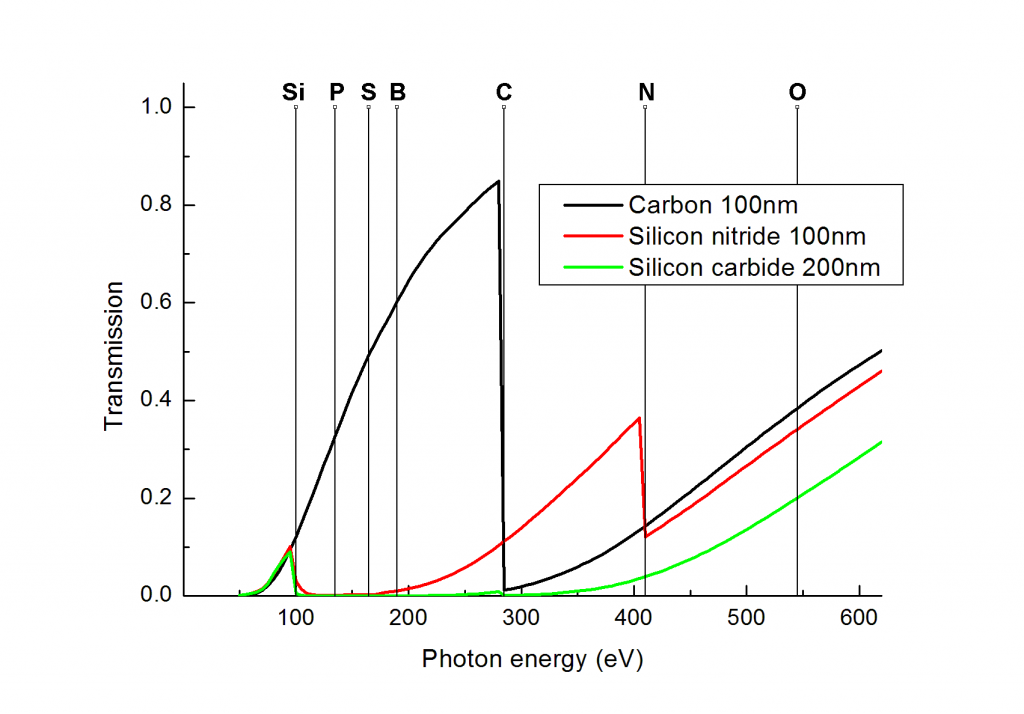
This graph shows the transmission of soft x-rays as a function of the photon energy. Transmission was calculated for 45 degrees in/45 degrees out using the online tool provided by CXRO at the Advanced Light Source. Carbon membranes give a superior transmission in the energy range 100-280 eV and is also useful at the nitrogen edge around 400 eV.
Three good reasons to take a particular interest in carbon membranes for x-ray spectroscopy:
- Investigate systems previously not accessible
- Increase productivity at the beamline
- Measure lower than ever concentrations with good signal to noise ratio
The JAVU carbon membranes are developed for synchrotron based x-ray spectroscopy of gases, liquids and solutions. They separate the ultra high vacuum environment of the synchrotron, beamline and x-ray instruments from the in situ environment under investigation. Normally the in situ environment is close to atmospheric pressure, and the membranes must therefore hold a pressure difference of 1 atmosphere.
Do not waste precious beam-time to find out your membranes break before reaching vacuum! The JAVU carbon membranes are guaranteed to sustain at least 1 atmosphere of pressure difference. Even higher pressure tolerance can be provided if necessary.
These carbon membranes constitute an enabling technology to scientists using the soft x-ray region in their research, in that in situ investigations of for example sulfur, boron and phosphor – along with a lot of other elements – is now possible in both liquid and gaseous samples, as well as reactions of such elements on surfaces.